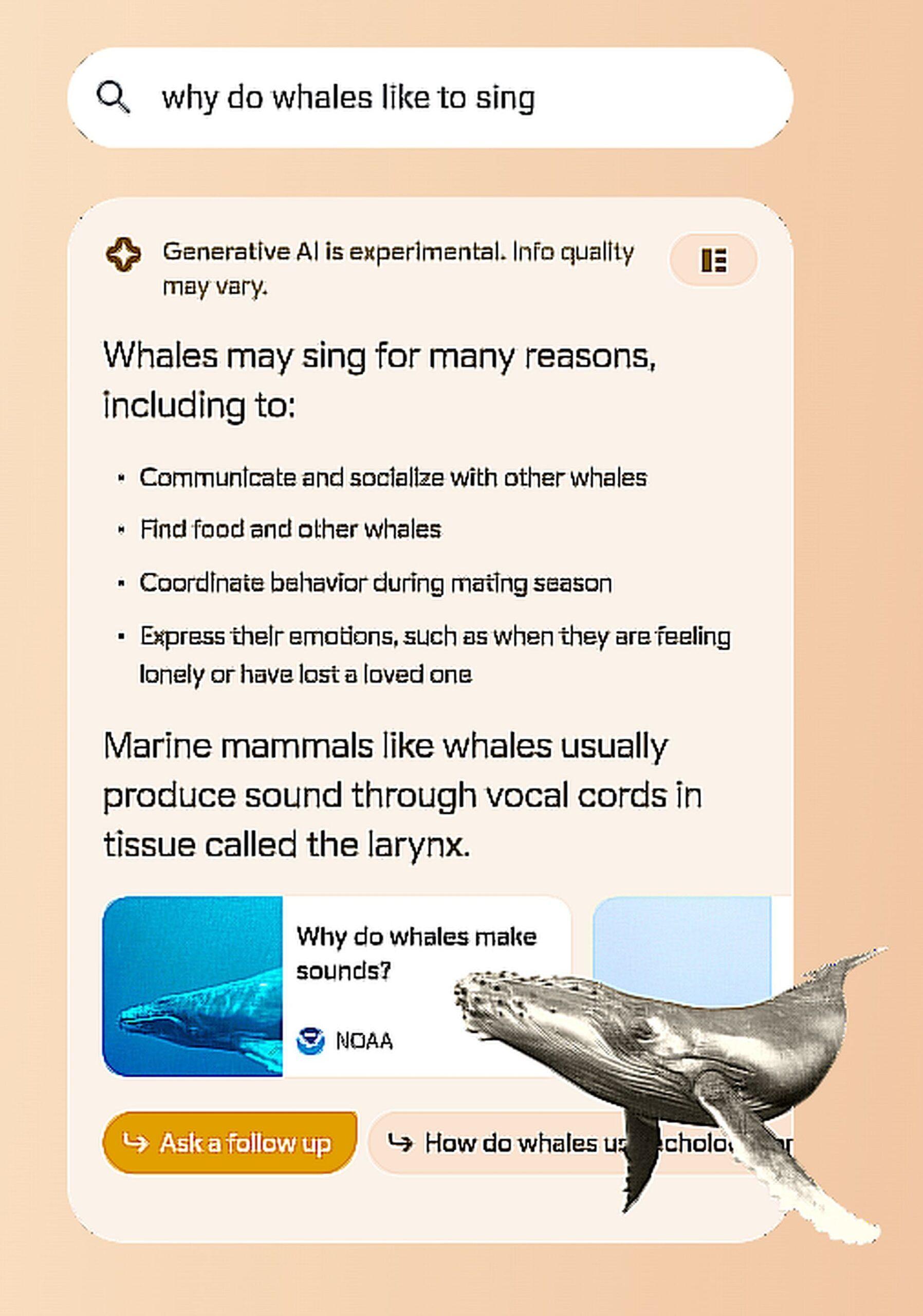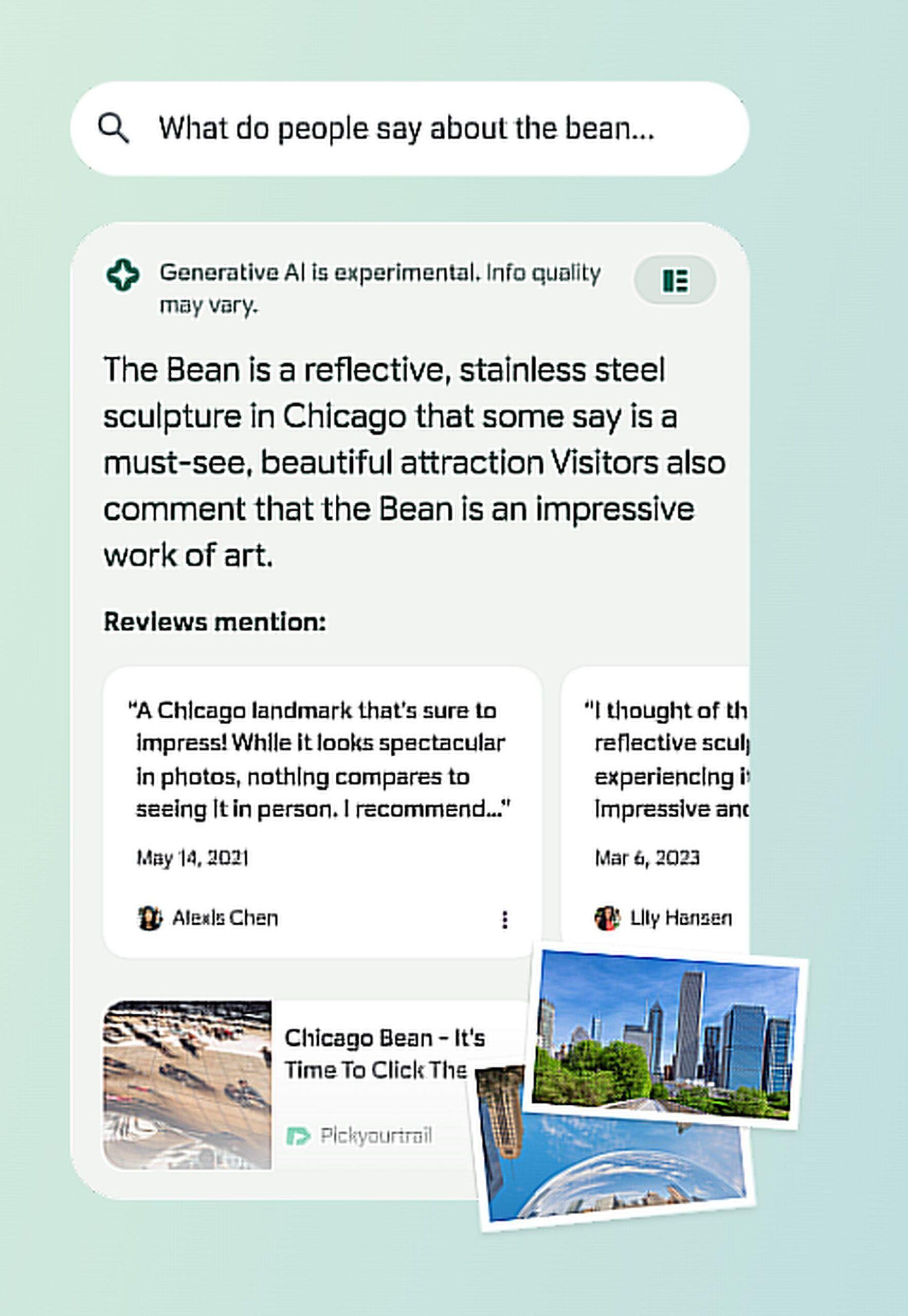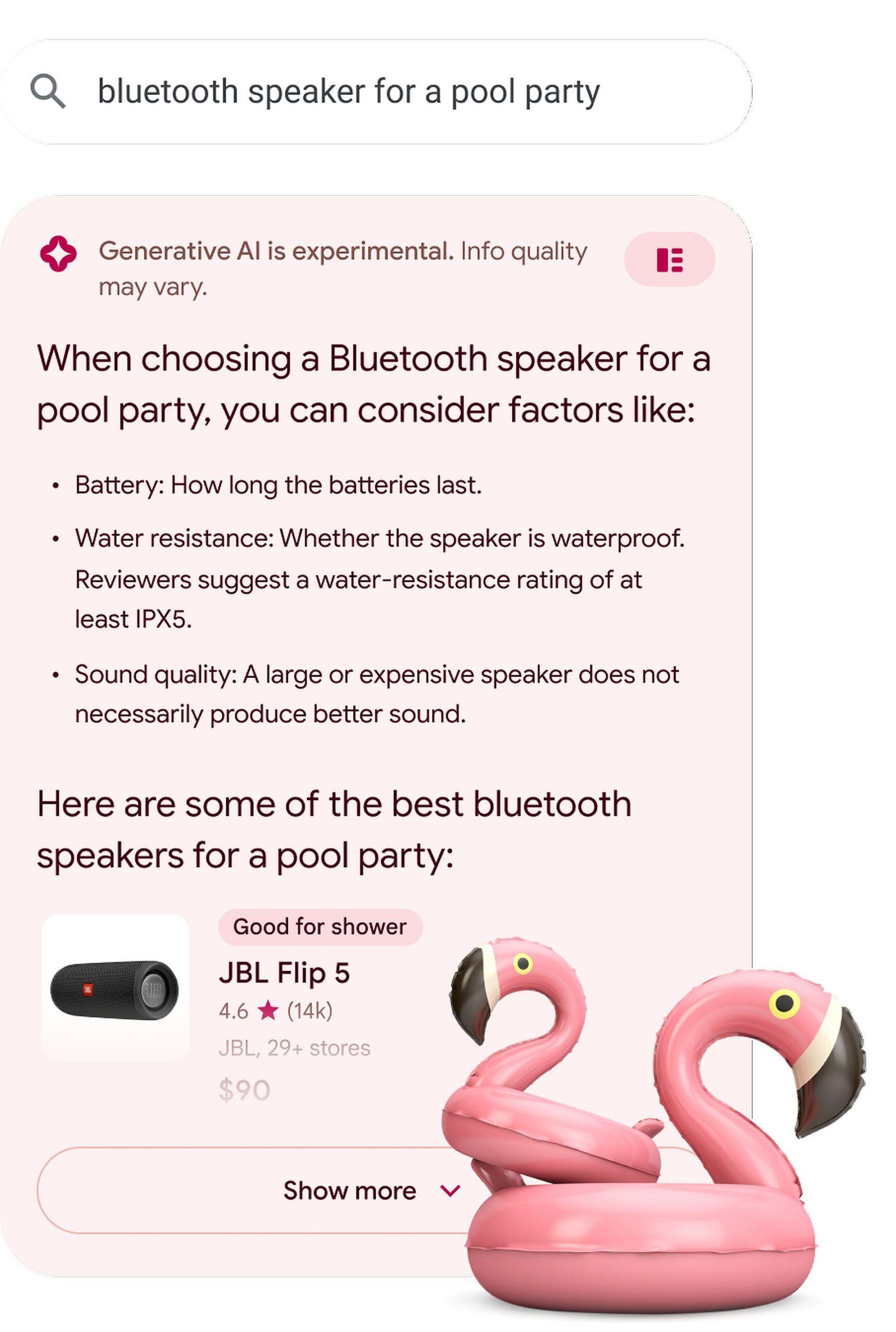What is Google SGE? For over two decades, Google has been at the forefront of search innovation, constantly reshaping the way we interact with the vast ocean of information on the web. Today, we embark on a journey into the heart of one of Google’s most exciting innovations: the Search Generative Experience, or SGE.
Imagine a search experience that not only understands your queries but engages with you in a natural and conversational manner. Think about an exploration of information that is not just informative but inspiring, creative, and seamlessly integrated with the world of advertising. This is what Google SGE promises to deliver.
In this article, we will delve deep into the world of Google SGE, demystifying its inner workings, exploring its dynamic features, and guiding you on how to harness its power. Join us as we unlock the future of search, where the boundaries between man and machine blur, and your journey for knowledge becomes an engaging, interactive, and enlightening adventure.
What is Google SGE?
Google SGE, or the Search Generative Experience, is a groundbreaking advancement in the field of search technology. It is a new way to interact with Google Search, powered by generative AI (Artificial Intelligence). SGE leverages large language models to offer users a more interactive and informative search experience. This innovative feature enhances the traditional search results page, making it more dynamic and capable of assisting users in various ways.
Google SGE works by incorporating powerful generative AI models into the search experience. Here’s a detailed breakdown of how it operates:
- AI-powered overviews: When you enter a query, Google SGE provides AI-powered snapshots or overviews of the topic you’re searching for. These snapshots are designed to give you a quick summary of the subject, complete with relevant information and resources. This feature helps you get a grasp of a topic faster and provides a starting point for further exploration.
- Image generation: SGE can then generate a series of images based on your text prompt, giving you options to choose from. The Imagen family of AI models powers this feature.

- Written draft generation: With Google SGE, you can also generate written drafts directly from the search bar. By entering a query, Google can generate drafts in various lengths or tones, such as long, short, or casual. If you’re satisfied with the result, you can export the draft to Google Docs or Gmail for further editing and use.
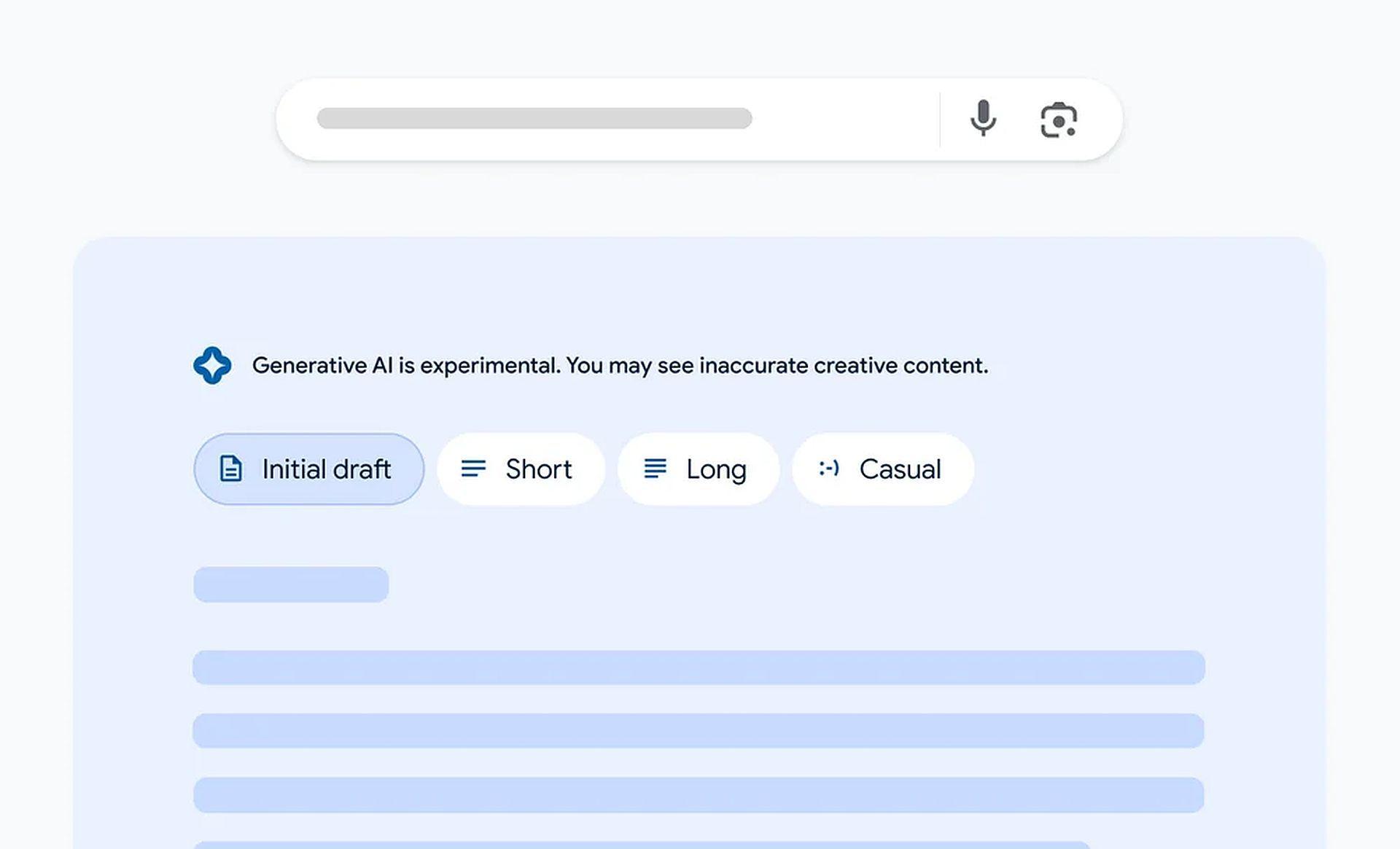
- Easier ways to follow up: SGE enables a more conversational approach to searching. Users can ask follow-up questions without needing to restate the context. Suggested next steps are also provided to help users continue their information journey seamlessly.
- Vertical experiences: For specific types of searches, such as shopping or local searches, SGE excels in offering insights and recommendations. For shopping queries, it provides product descriptions, reviews, prices, and images, while in local searches, it offers insights to compare and explore various options.
- Search ads integration: Google SGE seamlessly integrates search ads, allowing advertisers to reach potential customers throughout their search journey. Ads are clearly distinguishable from organic search results.
- Creativity and productivity: SGE isn’t limited to just retrieving information. It has the capability to assist users in creative tasks. Users can request generative AI to create images, which can be interactive and fun, helping users visualize ideas or find inspiration.
Google SGE is powered by a range of advanced LLMs, including a specialized version of MUM and PaLM2. These models are fine-tuned to meet users’ unique needs and to deliver reliable results. Google’s rigorous evaluation process ensures the quality and safety of these models. However, despite its advancements, SGE has some known limitations. These include misinterpretations during corroboration, hallucinations, potential bias in responses, and the possibility of opinionated content implying persona.
It's pretty messed that when I specifically try to use Google to find Travel Lemming's Oaxaca guides, I instead get Google trying to shove #SGE down my throat, and linking out to 3 OTHER sites. Wtf? pic.twitter.com/a4zMX9QpXN
— Nate Hake (@natejhake) October 14, 2023
So, what is Google SGE? It’s an innovative addition to Google Search that brings generative AI to the forefront of the search experience. In summary, Google SGE enhances your search experience by providing AI-powered overviews, enabling more natural conversations, offering insights for specific types of searches, integrating search ads, supporting creative tasks, and ensuring a user-friendly interface. It’s designed to make your journey for information not only efficient but also engaging and interactive.
How to use Google SGE
We briefly understand what is Google SGE. Now it is time to learn how to use it. Using Google SGE (Search Generative Experience) involves accessing the feature through Google’s Search Labs and then conducting searches. Here’s a step-by-step guide on how to use Google SGE:
- Access Search Labs: First, you need to gain access to Google SGE. At the time of the provided information, SGE was available through Google’s Search Labs program. You may need to visit the Search Labs website to check if it’s still available and if you’re eligible.
- Sign up for Search Labs: If you’re eligible and Search Labs is accessible to you, you’ll need to sign up for the program. This typically involves providing your Google account details and agreeing to any terms or conditions. To detailed information about how to sign up Search Labs, click here.
- Perform a search: Once you’re enrolled in Search Labs, you can proceed to use SGE. Perform a search on Google just as you would with any other query. You can use the Google Search bar to enter your search terms.
- Engage with AI-powered overviews: When you conduct a search, you’ll notice AI-powered overviews or snapshots alongside traditional search results. These snapshots provide quick summaries of the search topic, complete with relevant information and resources.
- Converse naturally: SGE allows you to engage in more natural and conversational interactions. You can ask follow-up questions without the need to restate the context of your initial query.
- Explore suggested next steps: SGE suggests next steps to help you continue your information journey. You can explore these suggestions to delve deeper into the topic or conduct related searches effortlessly.
- Utilize vertical experiences: Depending on the type of search, SGE offers specialized assistance. For instance, in shopping queries, you can get product descriptions, reviews, prices, and images. In local searches, you’ll find insights to compare and explore various options.
- Interact with Search Ads: SGE seamlessly integrates search ads. These ads are clearly distinguishable from organic search results, and you can engage with them as needed.
- Get creative: SGE also supports creative tasks. You can request generative AI to create images based on your queries. This is an interactive and fun way to visualize ideas or find inspiration.
- Enjoy a user-friendly experience: Google has invested in ensuring that the user interface is user-friendly and accessible, making your experience with SGE as smooth as possible.
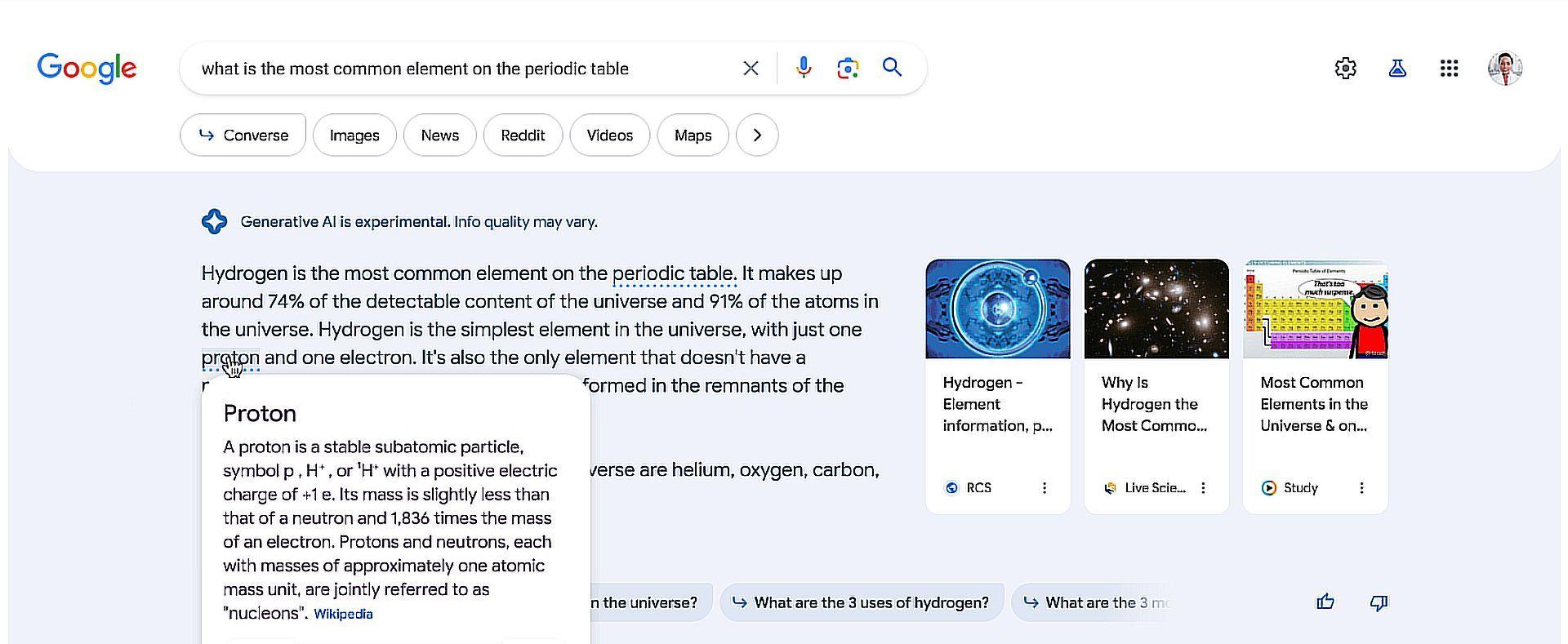
What is Google SGE? It’s a groundbreaking feature that allows users to engage with information in a more interactive and conversational manner. However, you should note that Google SGE is still an experimental feature and may evolve over time based on user feedback and Google’s ongoing research. Using SGE can provide a more interactive and informative search experience, giving users access to a wide range of information and resources in a convenient and user-friendly manner.
Conclusion
What is Google SGE? It represents the future of search, where the boundaries between humans and machines blur, creating a seamless interaction. The future of search has arrived, and it’s called Google SGE. With generative AI at its core, Google SGE promises to revolutionize the way we find and interact with information.
As we continue to explore its capabilities, Google remains dedicated to responsible development and improvement, building a safer and more efficient search experience for all. The journey of discovery with Google SGE is just beginning, and the possibilities are endless.
For more detailed information about what is Google SGE, click here.
Oh, are you new to AI, and everything seems too complicated? Keep reading…
AI 101
You can still get on the AI train! We have created a detailed AI glossary for the most commonly used artificial intelligence terms and explain the basics of artificial intelligence as well as the risks and benefits of AI. Feel free to use them. Learning how to use AI is a game changer! AI models will change the world.
In the next part, you can find the best AI tools to use to create AI-generated content and more.

AI tools we have reviewed
Almost every day, a new tool, model, or feature pops up and changes our lives, and we have already reviewed some of the best ones:
- Text-to-text AI tools
- Google Bard AI
- Chinchilla
- Notion AI
- Chai
- NovelAI
- Caktus AI
- AI Dungeon
- ChatGPT
- Snapchat My AI
- DuckAssist
- GrammarlyGO
- Jenni AI
- Microsoft 365 Copilot
- Tongyi Qianwen
- AutoGPT
- Janitor AI
- Character AI
- WordAi
- Venus Chub AI
- Crushon AI
- FreedomGPT
- Charstar AI
- Jasper AI
- WormGPT
- How to use WormGPT AI
- WormGPT download, here are the dangers waiting for you
- Llama 2
- Kajiwoto AI
- Harpy AI Chat
- RizzGPT
- GigaChat
- Easyerp.ai
- Jesus AI
- Gemini AI
- Answer AI
- Mistral 7B
- Talkie: Soulful AI
- Meta AI
- Candy.ai
- Dopple AI
- DeepAI
See this before login ChatGPT; you will need it. Do you want to learn how to use ChatGPT effectively? We have some tips and tricks for you without switching to ChatGPT Plus, like how to upload PDF to ChatGPT! However, When you want to use the AI tool, you can get errors like “ChatGPT is at capacity right now” and “too many requests in 1-hour try again later”. Yes, they are really annoying errors, but don’t worry; we know how to fix them. Is ChatGPT plagiarism free? It is a hard question to find a single answer. Is ChatGPT Plus worth it? Keep reading and find out!
- Text-to-image AI tools
- MyHeritage AI Time Machine
- Reface app
- Dawn AI
- Lensa AI
- Meitu AI Art
- Stable Diffusion
- DALL-E 2
- Google Muse AI
- Artbreeder AI
- Midjourney
- How to fix Midjourney invalid link
- Midjourney alternatives
- Midjourney AI tips
- Midjourney V5.2
- Midjourney video generation guide
- Where to look for the best Midjourney images?
- DALL-E 3 vs Midjourney
- DreamBooth AI
- Wombo Dream
- NightCafe AI
- QQ Different Dimension Me
- Random face generators
- Visual ChatGPT
- Adobe Firefly AI
- Leonardo AI
- Hotpot AI
- DragGAN AI photo editor
- Freepik AI
- 3DFY.ai
- Photoleap
- Artguru
- Luma AI
- BlueWillow AI
- Scribble Diffusion
- Clipdrop AI
- Artguru AI
- Stable Doodle
- Pica AI
- Canva Magic Studio
- Adobe Firefly Image 2 Model
While there are still some debates about artificial intelligence-generated images, people are still looking for the best AI art generators. Will AI replace designers? Keep reading and find out.
- AI video tools
- AI presentation tools
- AI search engines
- AI interior design tools
- Other AI tools
- Poised AI
- Uberduck AI
- Spotify AI DJ
- Pimeyes
- Microsoft Security Copilot
- OpenAI ChatGPT plugins
- Otter.ai
- Adobe Podcast AI
- Kaiber AI
- CarynAI
- Paragraphica
- Silly Tavern AI
- Meta Voicebox
- Network AI
- FraudGPT
- Murf AI
- AudioCraft
- Fliki AI
- Stable Audio
- Conker AI
- Alexa AI
- Beatoven.ai
- Andisearch AI
- Stable Signature
- Steve AI
- Delv AI
- Have I Been Trained
- Optic AI or Not
- Almanack AI
- SOM AI
- Cramly AI
Do you want to explore more tools? Check out the bests of:
Featured image credit: Google

